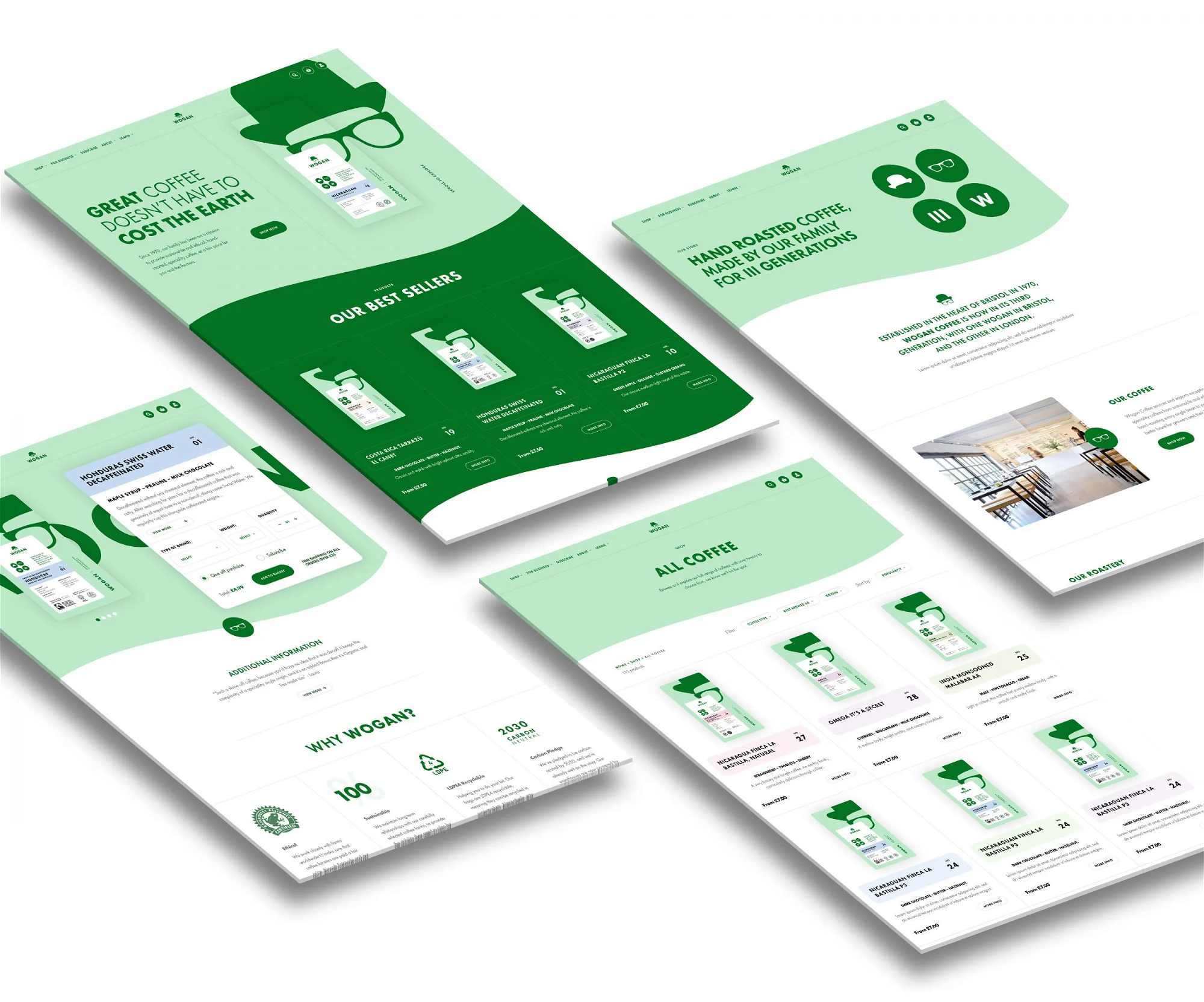The Ultimate E-Commerce Website Guide: 10 Tips for Success

From lettuce to live reptiles, you can buy virtually anything online these days – and we do. Consumers are driving growth in every kind of e-commerce, which is good news for businesses wanting to grow. With the right strategy, your shop window can be bigger, shinier and more visible than ever. However, succeeding online isn’t easy. It requires careful planning, effective implementation and continuous optimisation. Let’s go through some essential tips to help you win at e-commerce.
Key insights about e-commerce
Before we get started, let’s establish some key facts and stats about the e-commerce industry so you can decide whether or not it’s for you.
- E-Commerce is growing at an unprecedented rate, with more and more consumers turning to online shopping for their needs. The industry is expected to grow by 10.4% in 2023 alone.
- 57% of online shoppers report shopping internationally.
- Consumers expect fast and reliable shipping as standard, with 22% of online session drop outs being due to slow shipping.
- Most consumers shop from their phones and tablets rather than desktops, 91% make online purchases using their phones.
- By 2026, 24% of retail purchases are expected to be online, it’s estimated that this will be 20.8% in 2023.
- It’s an incredibly saturated market, so brands must differentiate themselves through branding, quality and great service.
*Thanks to Forbes for the stats referenced above.
E-Commerce Tips For Success
1. Choose a user-friendly platform.
Selecting the right e-commerce platform is essential. Shopify tends to be the all-round winner – it certainly was for our client Little’s Coffee, whose shiny new website that we built saw visitors increase by 49%. However, you should consider solutions like WooCommerce or Magento too, because they could offer you the capabilities you need. When it comes to picking a platform, these are the factors you need to consider: ease of use, scalability, customization, security as well as integration capabilities with payment gateways and shipping providers.
2. Optimise your website for mobile.
With most of us reaching for our phones to make online purchases, it’s crucial that your website is mobile-friendly. That means everything from the design and navigation to individual page loading times. The better your website is optimised for mobile, the better your customer engagement and search engine rankings will be.
3. Use strong product imagery.
When you can’t physically see or touch what you’re buying, high-quality product images become essential. Invest in professional photography or use stock photo resources to showcase your products in the best possible light. Effects like zoom features and multiple-angle views can drive purchasing decisions, so they’re worth considering, too. But don’t go overboard – it’s good practice to compress images and videos, otherwise shoppers will be sitting waiting for the content to load.
4. Streamline the checkout process.
Make sure to build a seamless purchasing process. Think as few steps as possible and one clear CTA on every page. Guest checkout options can be a smart strategy too, reducing the number of clicks someone has to make before purchasing. It’s also worth offering various payment methods such as Apple Pay or even ‘buy now, pay later’ options like Klarna.
5. Build security features.
Whether someone is chronically online or makes purchases very rarely, they still want to know their money is safe. Make sure you’ve got robust security measures in place to put customers at ease. There’s a middle ground between being so slack that something feels fishy and so secure that it feels like sitting an exam full of trick questions, so that’s important to bear in mind too. You want shoppers to feel confident, not exhausted.
6. Implement effective search functionality.
A powerful search function can significantly enhance the UX on your website. Include filters, sorting options and category-specific search to help customers find what they’re looking for. And if what they’re looking for isn’t there, you can show them related products they might even prefer – everybody wins.
7. Make it personal and targeted.
Personalisation is a growing consumer trend and with the rise of AI to help, there’s no excuses! Customer data can help you create tailor-made shopping experiences: everything from product recommendations based on browning history to exclusive offers for returning customers. Personalisation works extremely well for marketing, too. If you want to drive targeted traffic to your website, you might want to consider tactics like automated email marketing and retargeting social ads. If you’ve got multiple customer groups, personalisation can be especially effective. When we built a website for Wogan, the family-run coffee roasters, we split the UX, messaging and digital marketing between B2B customers interested in ordering for their cafes and shops, and B2C consumers wanting their daily coffee fix.
8. Leverage social proof and reviews.
If you’ve ever come across an online shop that felt too good to be true, you’ll know just how crucial social proof is. Sometimes, it’s the only way to tell whether it’s legit or a complete scam. To help build trust and credibility, encourage customers to leave reviews and ratings for your products. Once you’ve got a few, why not showcase them on your website? That way, potential buyers can feel confident about purchasing from you. Integrating social media sharing buttons and displaying the number of shares or likes can also help to instil confidence in your brand.
9. Deliver exceptional customer service.
If the customer is king, you need to provide a flawless customer service fit for royalty, no less. It’s a sure-fire way of building trust and differentiating your online store from competitors.
Try to offer multiple support channels like live chat, FAQs and a ‘contact us’ page.
Ideally, shoppers won’t need these – your website should give them all the information they need. So be sure to include detailed product information such as specifications, size charts and reviews. When Aardvark, the pet kibble pioneers, came to us for a new website, one of the most important pages we built for them was ‘The Science’. It hosts all kinds of information regarding product ingredients, recipes and all the expert-led science that goes into it.
Lastly, partnering with trusted and speedy couriers to offer next-day delivery is increasingly becoming the expected norm, so pick your postman wisely.
10. Invest in SEO.
To attract organic traffic, it pays to invest in search engine optimisation (SEO). Conduct keyword research so you can gauge what customers are actually searching for. Once you’ve got a handle on this, apply it to your product descriptions, meta tags and URLs.
If you want to stand out as an authority in your field, why not also create a bank of valuable content? Things like blog posts and product guides are genuinely useful (if they’re done right!), but they also help to position you as the go-to brand for your particular niche.
Conclusion.
If you want to take your online shop to the next level, you’ll need some strategic planning, user-centric design and effective marketing. It’s not easy, but if you ask us, it’s worth it – you can quite literally expand your customer base overnight. You’ll need to make some tricky decisions such as which e-commerce platform to use and how to streamline your purchasing process while still keeping it secure…but that’s why we’re here. As experts in e-commerce, you can leave all of the websitey bits to us so you can focus on whatever it is you do best.
Interested in working with KOTA?
Drop us a line at
hello@kota.co.uk
We are a Creative Digital Agency based in Clerkenwell London, specialising in Creative Web Design, Web Development, Branding and Digital Marketing.





